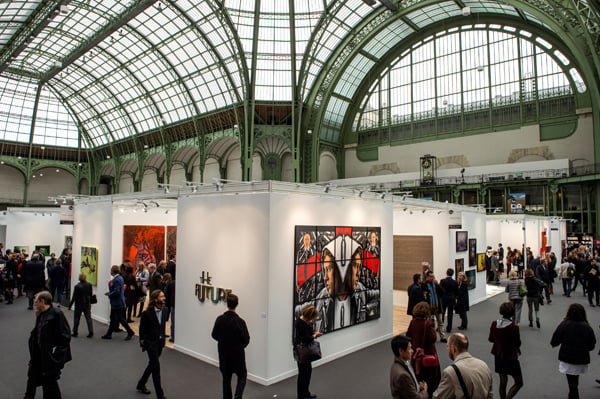Galleries
France Changes Tax System to Benefit Artists
But in other EU countries, turmoil over taxes on art remains.

But in other EU countries, turmoil over taxes on art remains.

Alexander Forbes

Artists based in France and hoping to sell their work directly from their studios, have gotten a boost from the government. As of January 1, the value added tax (VAT) rate on artworks purchased directly from artists is 5.5 percent. It marks a significant reduction from the previous rate of 10 percent.
The reduction comes one year after the rate paid by those wishing to buy works from commercial galleries was raised from 7 percent to 10 percent. The new VAT paid on works purchased from their producers is equal to the 5.5 percent tax rate paid on art imported into France.
The model is similar to that of Germany, which provides a reduced 7 percent tax rate for both art imports and artworks purchased from artists directly. Previous to a decision in October 2013, France’s import rate on artworks was also 7 percent.
The French government had previously considered raising that rate to 10 percent, or equal to the pre-January 1, 2015 rate on works purchased from artists themselves. However, they quickly responded to pressure from within the culture industry, whose members had argued that high VAT and import taxes were hurting their business. The import tax was dropped in time for FIAC.
Non-Standardized Tax Rates
Across the EU, taxes on art purchases from galleries and auction houses remain wildly non-standardized between countries, ranging from a VAT rate of 21 percent in Italy, to France and Austria’s 10 percent rate and (non-EU member state) Switzerland’s 8 percent VAT. Experts have cited these disparities and generally less business friendly conditions in Europe, compared to the US, as a key factor in the region’s shrinking share of the global market (see “10 Things You Need to Know About Investing in Art” and “TEFAF Art Market Report Says 2013 Best Year on Record Since 2007, With Market Outlook Bullish“).
In Germany, due to a mandate by the EU Commission, the VAT on the sale of art and other cultural goods was raised to 19 percent one year ago (see “German Dealers Lambast Tax Hike on Artwork Sales“). VAT for visual art, excluding photography, was, like the country’s import rate on art, previously 7 percent.
However, German dealers have seen the move as unfairly overlooking the particularities of the art trade. “It is especially hard since we have to pay Künstlersozialkasse [a form of social and health insurance for cultural producers in Germany] on top of the purchase price from an artist (5.2 percent) plus droit de suite on top of the net selling price,” Berlin dealer Aurel Scheibler, a member of the German Association of Galleries and Art Dealers (BVDG), told artnet News.
No Direct Support for Galleries
“The politicians here do not understand our problem,” he adds. “They love to ornate themselves with art and artists, and especially in Germany, we have a very high standard for stipends, money coming from the state and the Bundesländer (federal states), the cities, plus foundations, private and public putting a lot of money to help artists.” But, there remains no direct support for galleries themselves—80 percent of which Scheibler says operate at or close to a loss in order to promote culture—and no acknowledgement of these challenges by way of tax breaks.
Political gridlock is mostly to blame. In Brussels, a failure to include art in the EU provision that allows countries to charge lower VAT rates on music and books, has created a precarious-to-impossible situation for countries that would, all other things being equal, subsidize their art industry with lower taxes. And, in Germany, despite a more favorable and EU compliant model that was proposed by the BVDG and okayed by the country’s finance minister at the federal level, the finance ministers of Germany’s 16 states shot down the proposal. “To put it in surreal words,” Scheibler says, “in Germany the image of the dealers is that they are the greedy monsters pressing money out of the artists and cheating the collectors.”